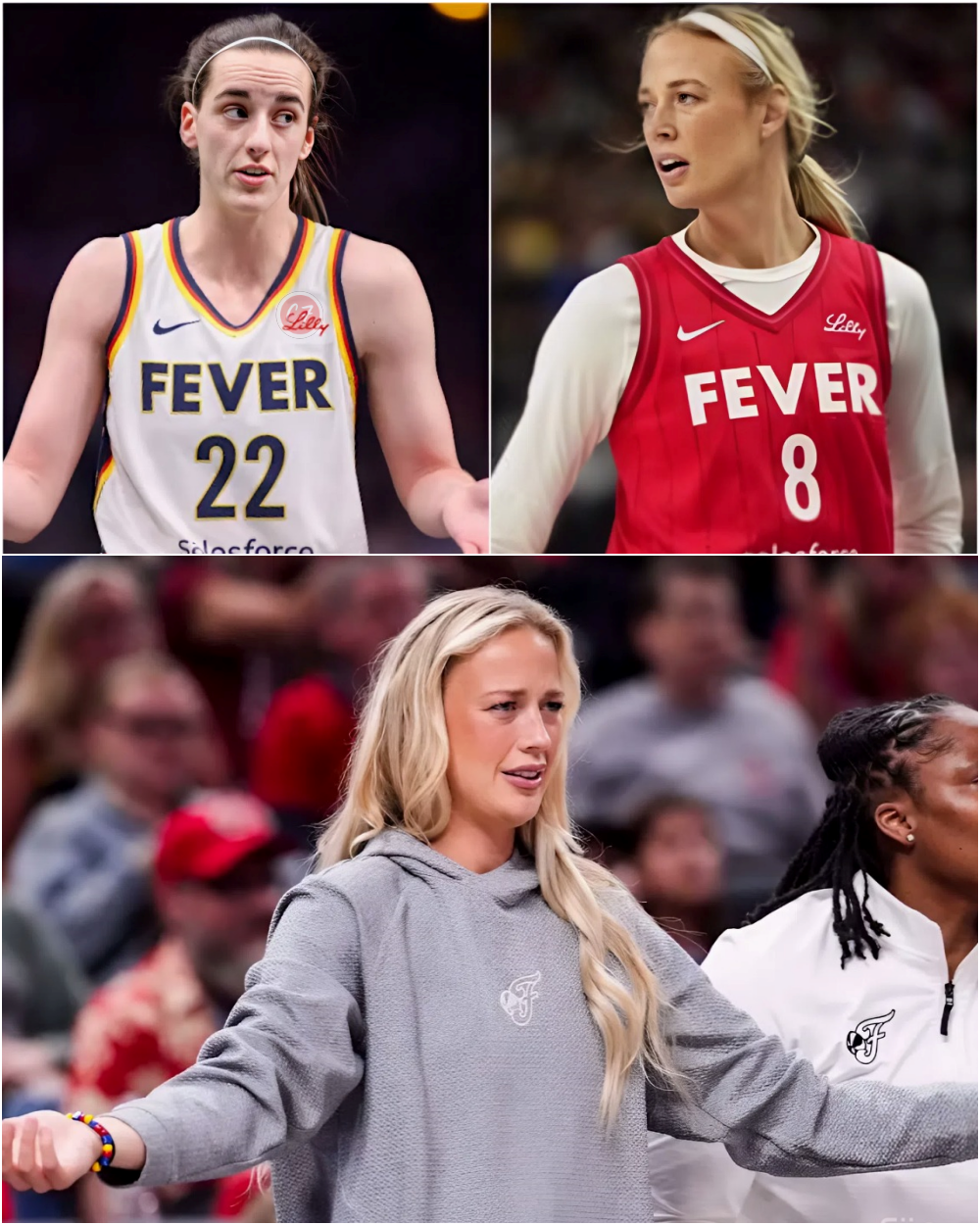
The lights cut sharp lines across the court, bouncing off sweat, jerseys, and expectant faces. For most of the night the rhythm felt predictable: runs traded, whistles blown, the thrum of a crowd desperate for a reason to believe. And then, without warning, the temperature in the building changed. It wasn’t the score flashing overhead or a single play on the floor. It was the weight of unease, an invisible current that made every dribble feel heavier. The game was ending, but the real story hadn’t even begun.
When players finally filed toward the tunnel, their bodies slumped and their eyes lowered, the atmosphere was suffocating. The Fever had walked through something they couldn’t quite name. And in the press room moments later, Sophie Cunningham would strip away every excuse. She didn’t blink, she didn’t stall, she didn’t protect feelings. She spoke one line, cold enough to silence a room of seasoned reporters. That sentence has now circled the globe, because it cut deeper than a box score.
Indiana had entered the matchup with Washington carrying expectation. It wasn’t supposed to be complicated. The Mystics are stuck at the bottom of the standings, grinding through a season of inconsistency, while the Fever sit in the teeth of the playoff race. This was supposed to be a steadying night. Aaliyah Boston carved out deep position possession after possession, scoring 20 and pulling down 9 boards. Kelsey Mitchell toggled between facilitator and scorer, producing 14 points and 9 assists. Cunningham herself filled cracks with 8 points, 6 assists, 3 steals. Odyssey Sims, signed on a hardship contract, brought 11 points of energy that kept Indiana alive. The ingredients were there.
And still, momentum bled away. The Fever built a double–digit cushion in the second quarter, leading by 13, only to watch Washington storm back with a 22–7 run that flipped the crowd on its head. What should have been a statement half turned into a knife’s edge. Possessions slowed, the ball stuck, and what began as pace became paralysis. By the time the horn sounded, Indiana had given away 21 fouls, handed the Mystics 26 free–throw attempts, and let a night they once controlled slide beyond their reach.
The missing presence was undeniable. Caitlin Clark, sidelined with an ankle injury, never touched the floor. Without her, spacing collapsed, energy sagged, and everything felt labored. Opponents no longer stretched themselves thin to account for her range. They crowded Boston, they loaded Mitchell’s lanes, they dared the Fever to shoot. Clark’s absence wasn’t just tactical — it was psychological. Without her, Indiana looked human.
But none of that prepared anyone for what came next. Postgame pressers often dull the senses: phrases repeated, clichés recycled. Sophie Cunningham didn’t bother. She stepped in front of the microphones and spoke a sentence that left the room still.
“We’ve had injuries,” she said flatly, “but that can’t be our excuse anymore. We’ve got to get back to being dogs — because right now, teams don’t fear us.”
The words landed like a hammer. A moderator froze. Fingers lifted off keyboards. A producer mouthed hold. Reporters accustomed to spin realized they were hearing something raw. The silence wasn’t awkward; it was sacred. In twelve seconds, Cunningham crystallized what the fanbase had been murmuring for weeks.
Head coach Stephanie White followed moments later, pointing to familiar issues. The offense had stalled. Too many fouls had piled up. Spacing dried out. She defended the decision not to play Khloe Bibby — a 42% three–point shooter — by citing defensive matchups. But fans weren’t convinced. The defense had already leaked, and without shooters on the floor, Mitchell and Boston drowned under pressure. White’s reasoning wasn’t entirely wrong, but it felt small next to Cunningham’s clarity.
That contrast is now the heart of the story. The players are bleeding for every inch: Boston punishing the paint, Mitchell grinding into double teams, Sims holding the ball under duress. Cunningham doing the work that doesn’t headline, then saying the words no one else dared. The effort is visible. But effort without direction is wasted.
Fallout came fast. Indianapolis talk shows looped Cunningham’s clip, fans arguing late into the night. On Twitter, #BeDogsAgain trended, her phrase already branded into the fanbase’s bloodstream. In Ljubljana, bars replayed the quote on loop as locals raised glasses to their Slovenian star who never touched the floor. Even ESPN’s national desk led with the soundbite, debating whether Cunningham’s line was a challenge to her teammates or a direct shot at her coach. Either way, the divide had surfaced.
The numbers in the standings sting. A loss to the bottom team dropped Indiana to seventh, a precarious perch with the postseason looming. The gap between safety and collapse is now paper–thin. Every wasted possession counts. Every foul matters. Every rotation missed reverberates louder. This wasn’t just a stumble; it was a crack in the floorboards at the worst possible time.
Cunningham’s line matters because it wasn’t just frustration; it was a map. To “be dogs” is not metaphorical. It’s urgency in cuts, violence in screens, precision in tags, running corners like survival. It’s the refusal to let a 13–point cushion wither into panic. It’s punishing indecision, not waiting for it. It’s creating fear again.
Fear is a weapon. The Fever don’t wield it right now. They can. They should. It’s not talent they lack, it’s clarity. One less hand check. One more strong box–out. One earlier kick–ahead. Stack enough of those and the team that looks drained becomes the team opponents dread again.
By the time the press area emptied, the silence had shifted. No longer numbed resignation, it was working silence, the kind that says: we heard it, now we’ll prove it. Proof has to come quickly. The season will not wait.
Not because Sophie spoke louder. Because she spoke first what everyone else had been living with: the Fever aren’t feared. Not yet. Either that changes now, or the season does.
Disclaimer: This coverage is presented in a narrative news format, combining on-site atmosphere, broadcast commentary, and public reactions. All details are framed to reflect how the game and its aftermath were perceived across media and fan discussions at the time.



